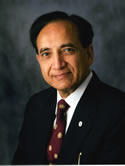| Abstract: |
BACKGROUND. The objectives of the current study were to report the incidence of postoperative complications for salvage total laryngectomy (STL) compared with primary total laryngectomy (PTL) and to identify patient and tumor-related factors predictive of postoperative complications. METHODS. A sample of 183 patients who had received a total laryngectomy were identified from an existing database of 662 patients treated for squamous cell carcinoma of the larynx. PTL and STL were performed in 113 and 70 patients, respectively. Initial therapy in the patients who required salvage surgery included radiotherapy (RT) in 32 (46%) and chemoradiotherapy (CTRT) in 38 (54%). Postoperative complications were recorded for each group and categorized into local, swallowing, airway, and systemic complications. Postoperative complication rates for STL after RT and CTRT were compared with those after PTL by univariate analysis. Patient and tumor-related predictors of complications were identified by univariate and multivariate analyses. RESULTS. The overall mortality rate was 0.5%. Forty percent of all patients developed a postoperative complication after total laryngectomy. Local complications, which were the most frequent, occurred in 52 (28%) patients. Pharyngocutaneous fistula occurred in 31 (17%) patients. Statistical analysis showed that there was a greater number of patients with local wound (45% vs. 25%, P = 0.02) and fistula complications (32% vs. 12%, P = 0.012) in the STL-CTRT group compared with the primary laryngectomy group. Multivariate analysis showed that primary CTRT was an independent predictor of local complications and pharyngocutaneous fistula. CONCLUSIONS. Salvage laryngectomy was more frequently associated with postoperative complications after CTRT compared with PTL. Problems related to local wound healing, especially the development of pharyngocutaneous fistula, constituted the most common postoperative complication in these patients. Multivariate analysis showed that primary CTRT was an independent predictor of local wound complications and pharyngocutaneous fistula. © 2005 American Cancer Society. |












